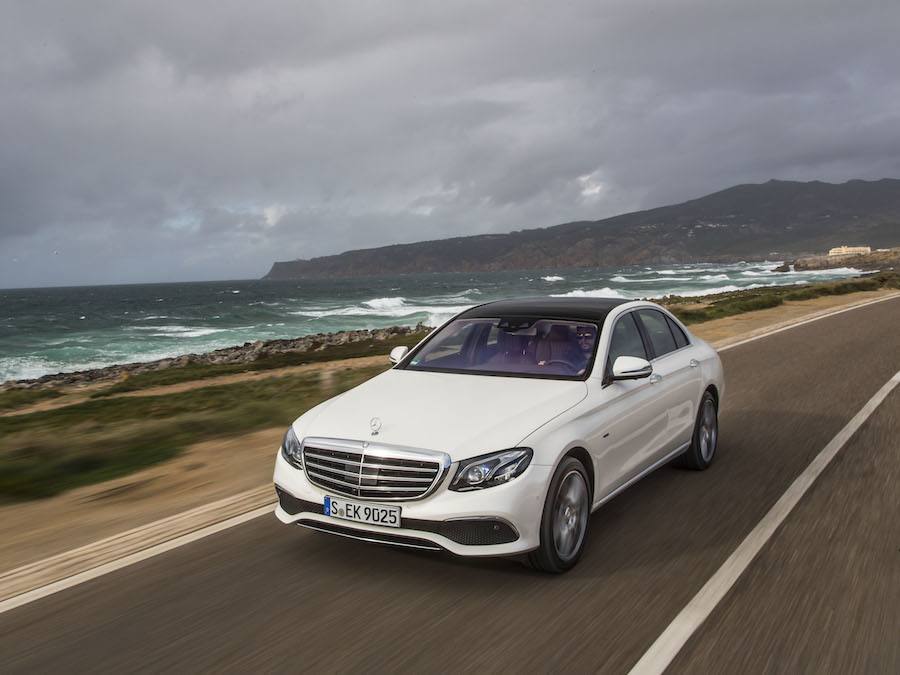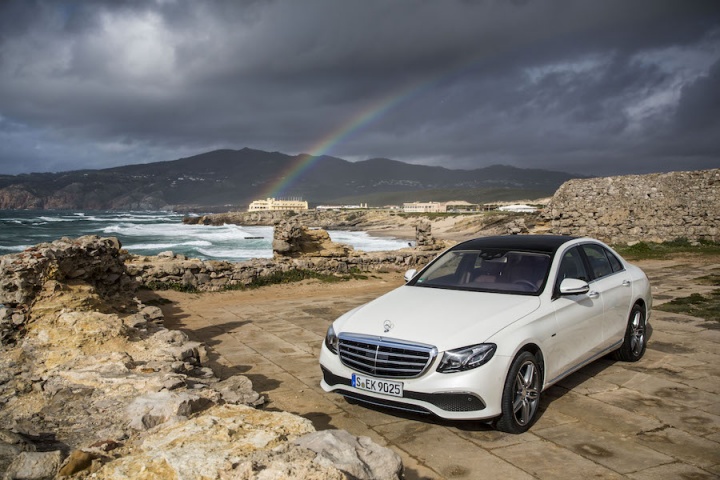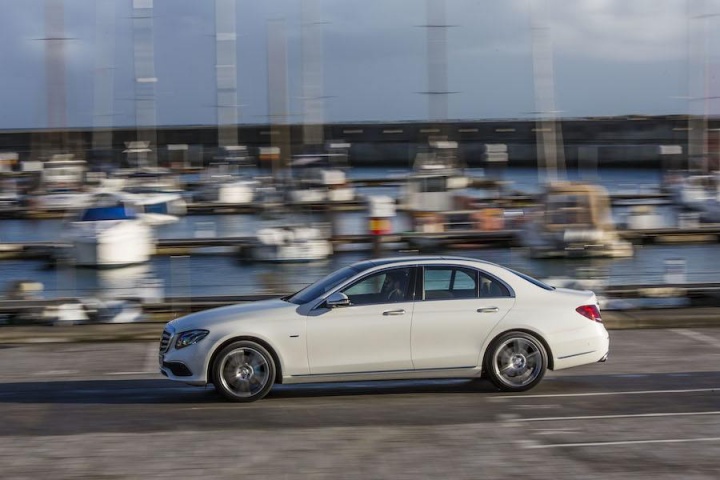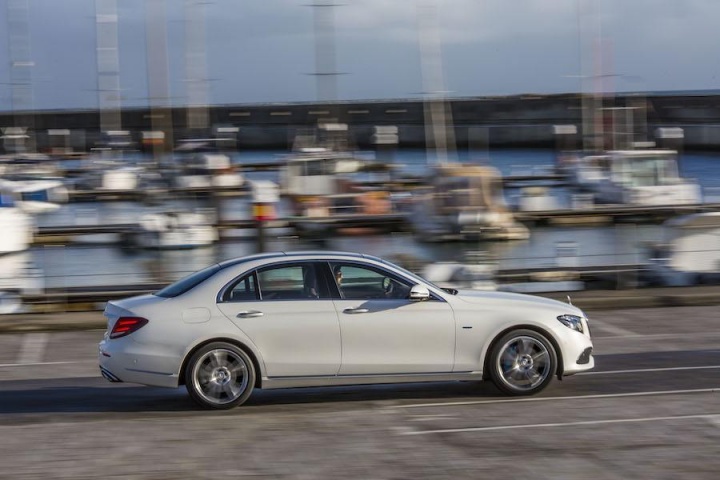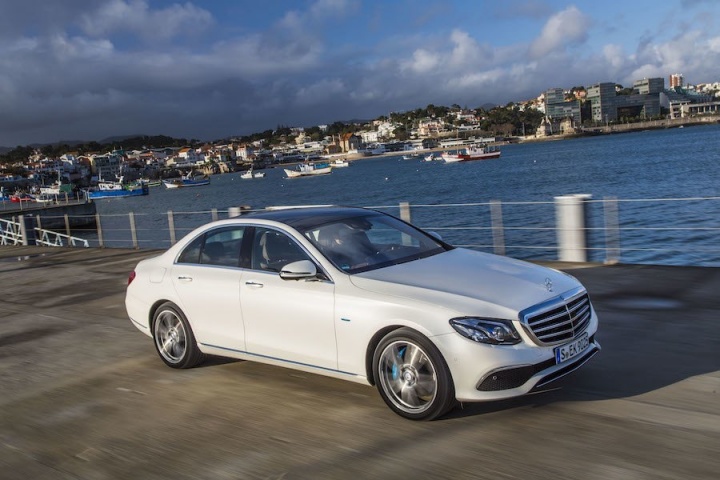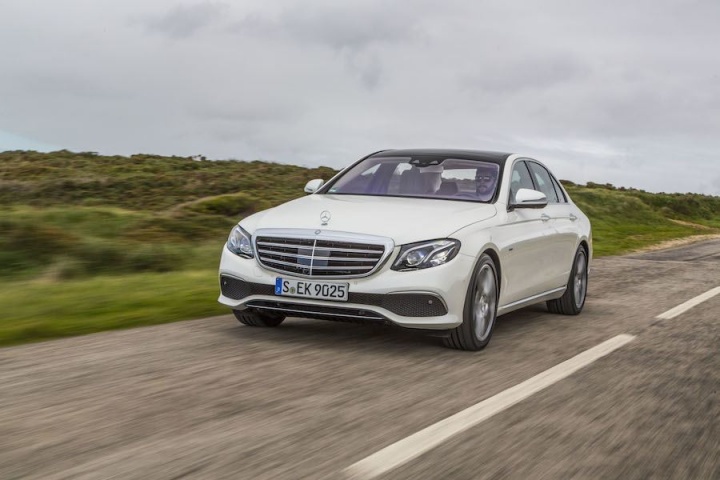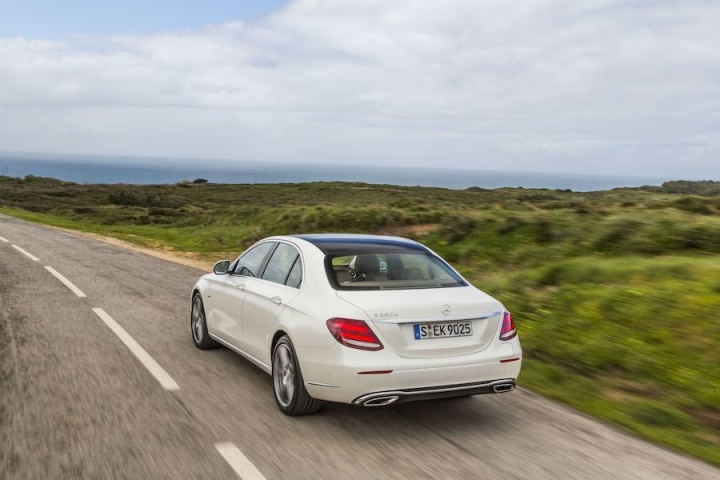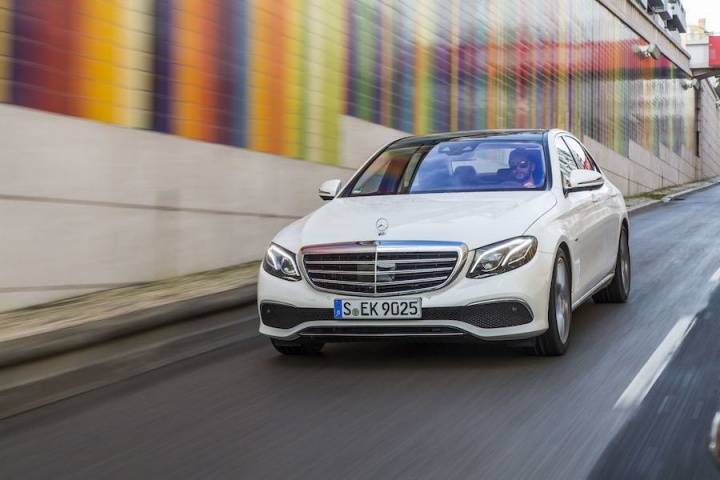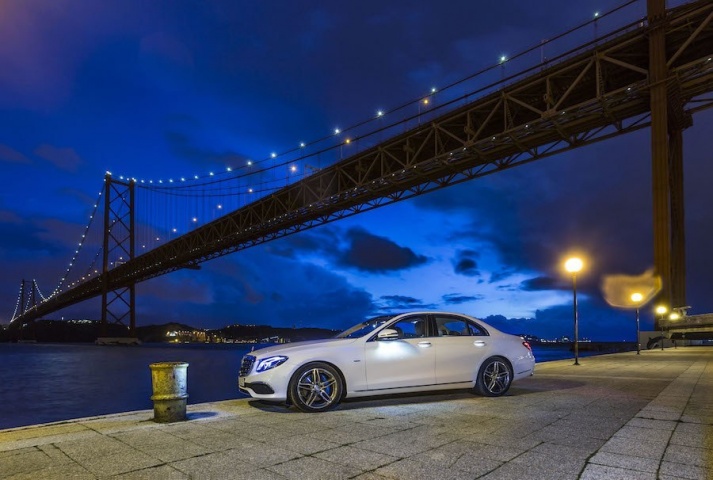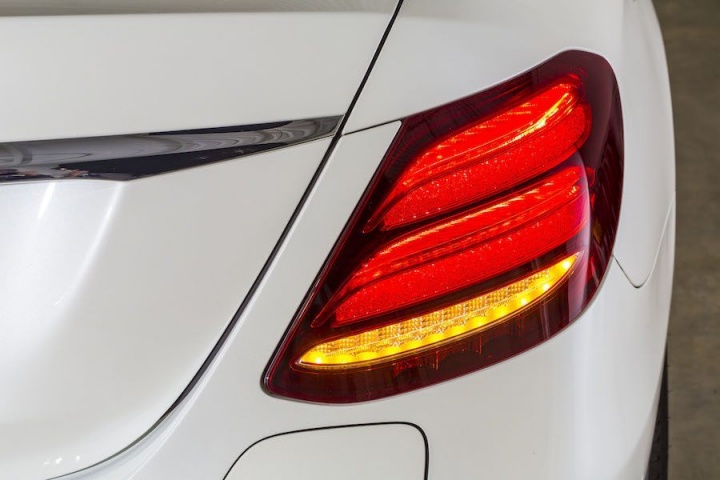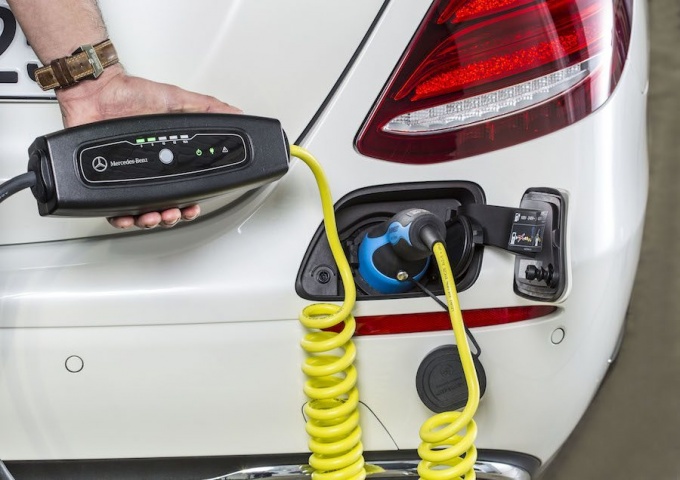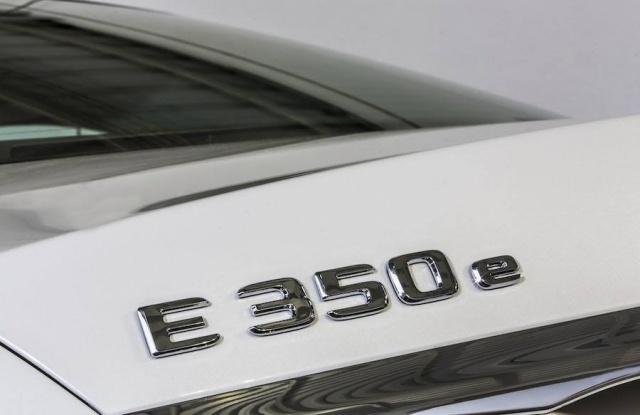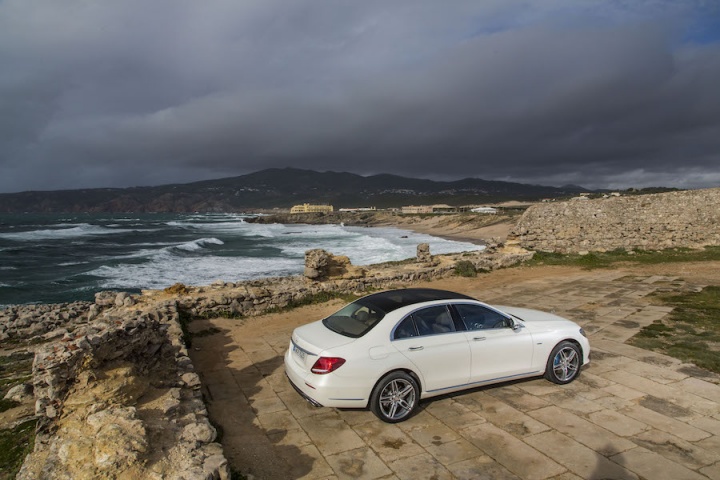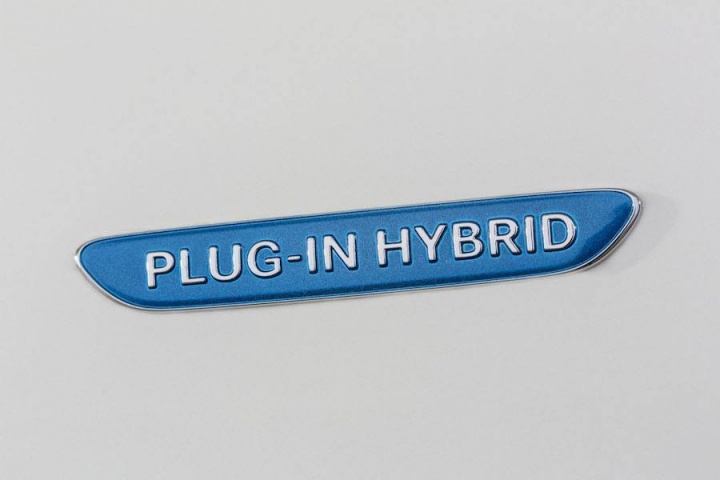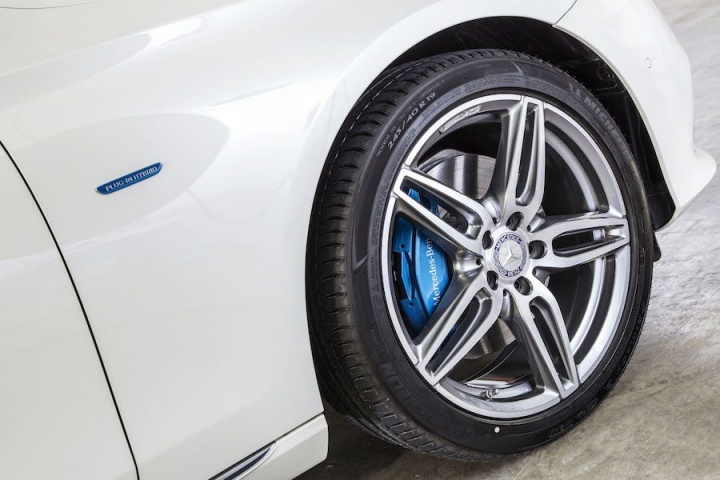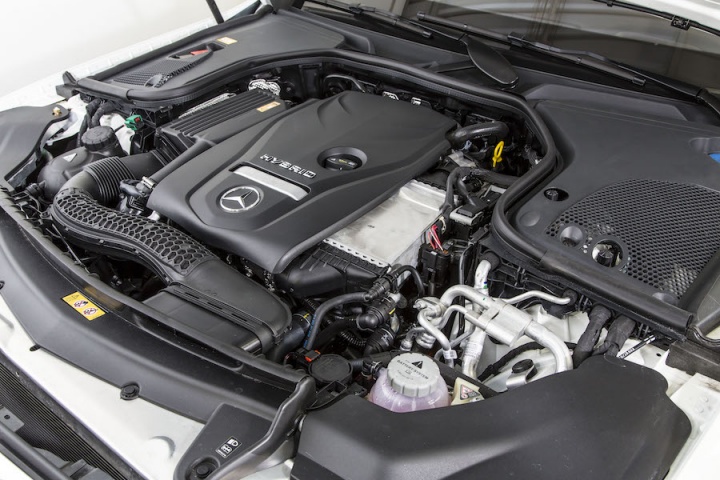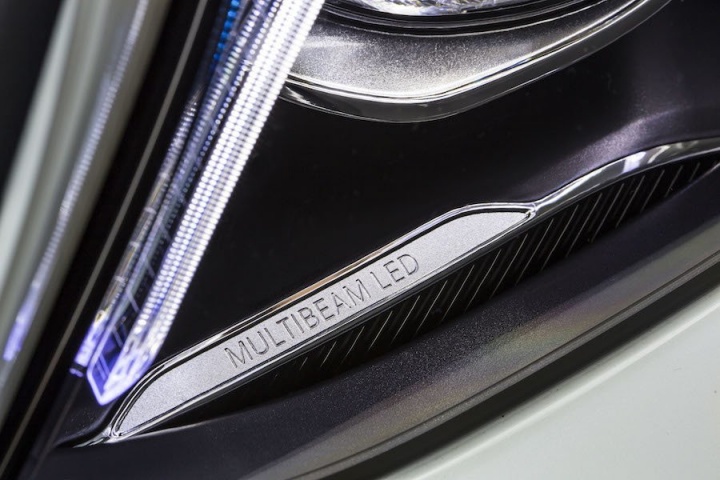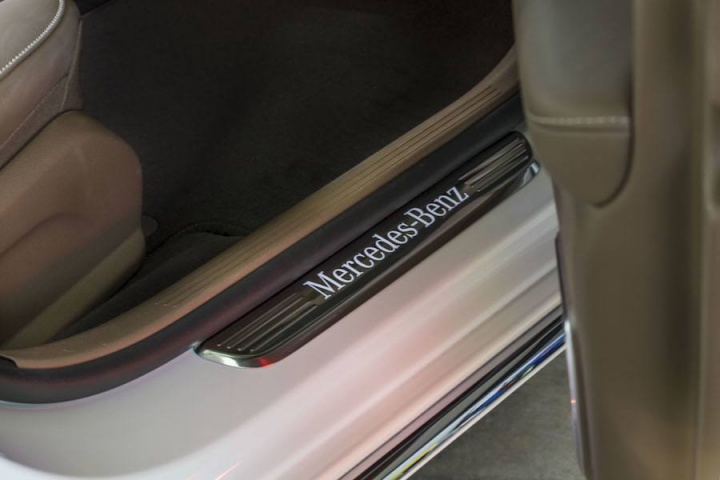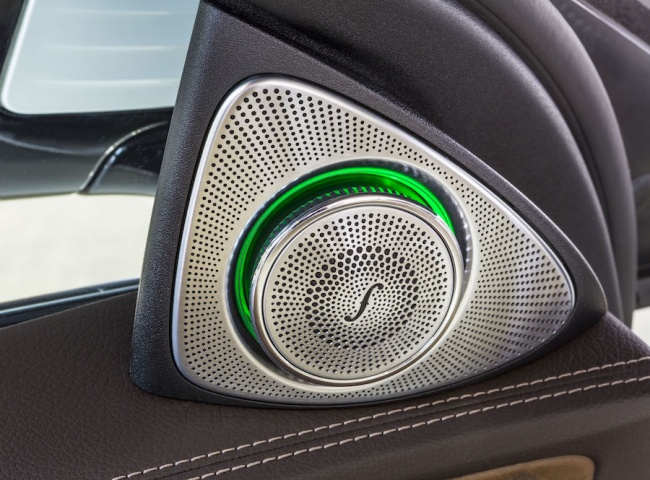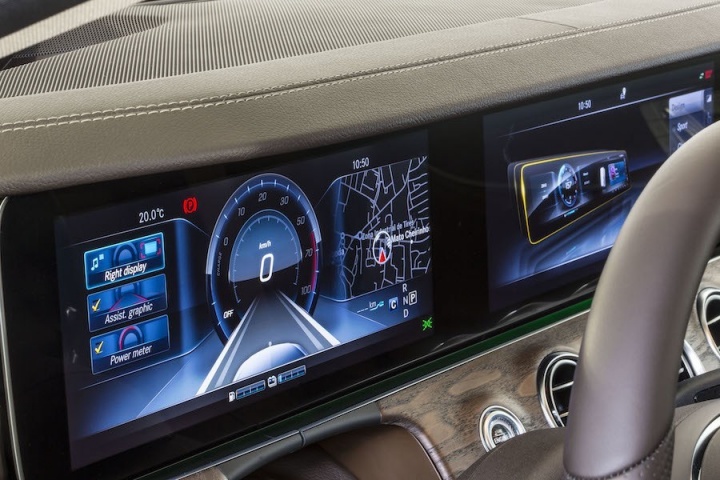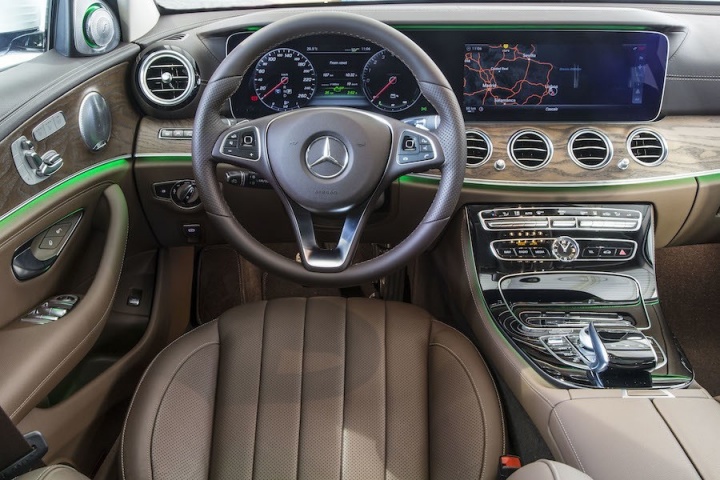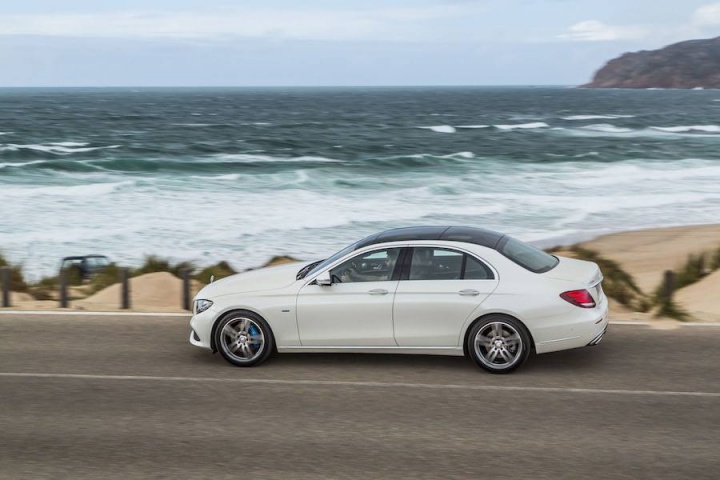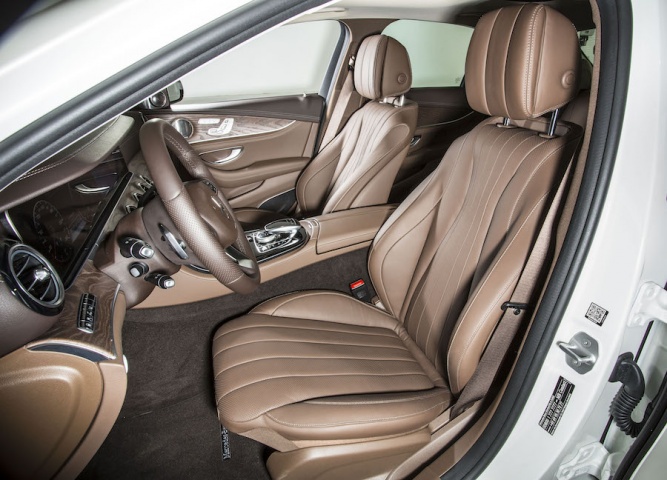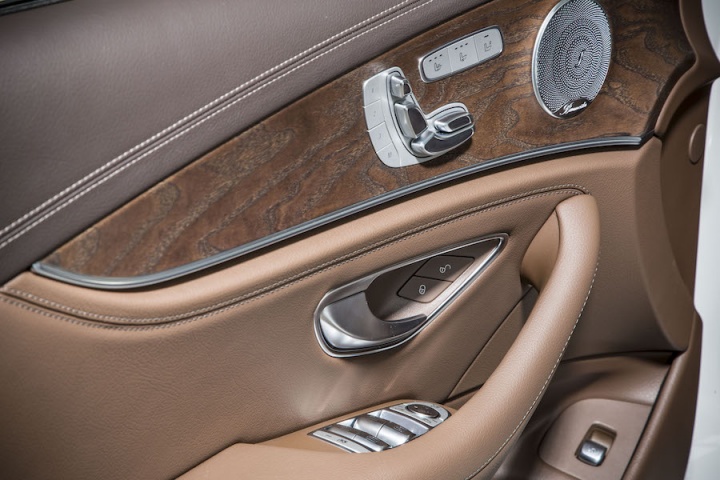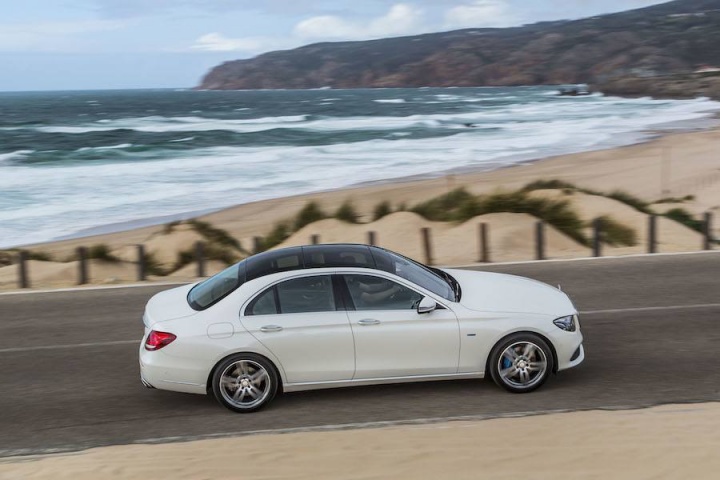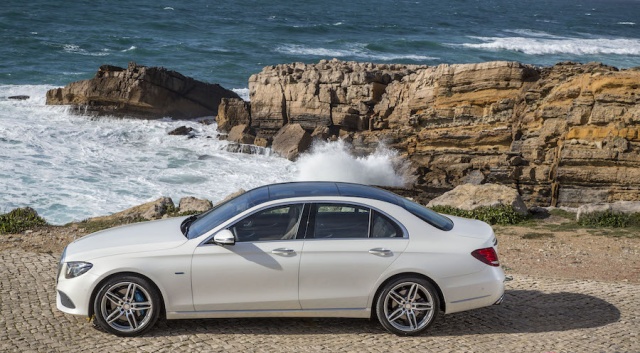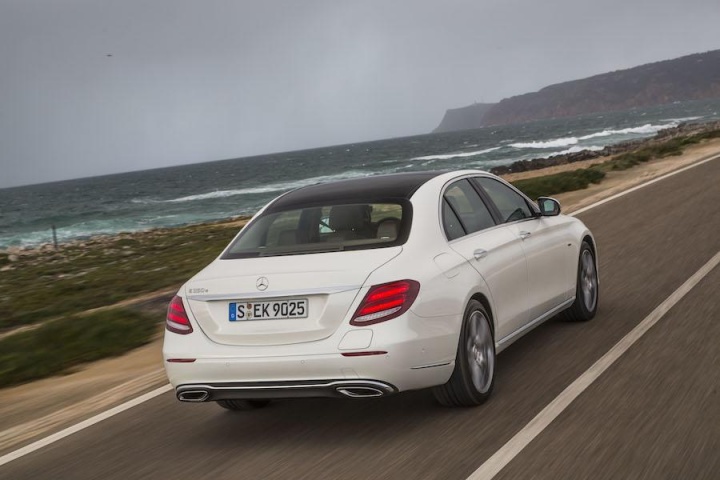The Mercedes-Benz E 350 e supposedly offers the best of all worlds, thanks to a usable electric-only range and exceptionally low emissions and fuel consumption figures. The latter, of course, only apply when the hybrid is regularly plugged in to charge up its battery, but for those of a certain driving profile it could make a sensible alternative to the default diesel. You'll need to wait until 2017 to see it in a showroom near you though.
In the metal
You'd have to be a trained E-Class spotter to notice that you're looking at the PHEV version. There are blue brake callipers up front, discreet badges and an equally subtle flap in the rear bumper covering the charging point.
Inside, it's the same story, though the game is given away by the extra buttons that surround the Comand controller in the centre console. They allow access to four overall operating modes (Hybrid, E-Mode, E-Save and Charge). Along with that the E 350 e comes with pre-entry climate control, set by a smartphone app, plus of course a myriad of extra displays and readouts in the on-board computer.
Driving it
Mercedes-Benz quotes a 30-kilometre electric range for the E 350 e thanks to the inclusion of a 6.2kWh lithium ion battery. It sends power to a 65kW (88hp) electric motor that can propel the E-Class to 130km/h. Stick with the Hybrid mode for mixed driving and it's surprising how often the engine is shut down. While it's never intrusive starting back up, it is audible, and the four-cylinder turbocharged petrol unit isn't the quietest in operation if you're seeking its full performance (which is admittedly quite punchy). Hence the E 350 e is most impressive in an urban setting, or cruising. Though of course, on a long-distance cruise, the petrol engine will be used a lot once the battery charge is consumed. If you program a destination into the satnav, however, the system will optimise the battery usage to be fully drained on arrival, with the assumption that you can plug the car in there to charge it back up.
Another clever feature is the E 350 e's haptic accelerator pedal. When running solely on electricity, the driver will feel resistance through the pedal to indicate that, if they push further, then the petrol engine will start up. More ingenious again is a double impulse function that effectively taps twice on the driver's sole to indicate that energy could be saved if they backed off the throttle. This happens when the radar detects a slower moving vehicle in front. It's undoubtedly all very smart, and its low emissions should mean decent pricing here in Ireland, but high-mileage drivers are still better off with diesel power, as the hybrid's headline grabbing numbers are only achievable if the battery is regularly charged up from an external source.
What you get for your money
Pricing for the PHEV E-Class won't be known for some time, as it's not set to hit right-hand drive markets until 2017. The low emissions rating should help keep the price down, as most likely will grants, but it appears that the E 350 e may come in one generously equipped specification, which may bring the price back up. For example, it's known that Air Body Control suspension is standard in this model.
Alternatives
Audi A6 e-tron: it doesn't exist as yet, but this has the potential to be the closest competitor to the E 350 e with full plugin capability.
BMW ActiveHybrid 5: more powerful, but not a plugin hybrid so theoretically less efficient. Likely to be replaced with a PHEV in the new generation 5 Series.
Lexus 300h: more affordable than the high-performing GS 450h, but no plugin ability and hence a low electric-only range.
Summary
Irish drivers are slowly realising that diesel engines are not suited to all motorists. The time is therefore ripe to present petrol-electric hybrid propulsion as a real alternative, especially when it's paired with plugin capability and a large battery pack to allow for a really usable electric-only range. Sales of the new PHEV E-Class will depend largely on its pricing, but we predict it'll be one to watch when it arrives in 2017.

